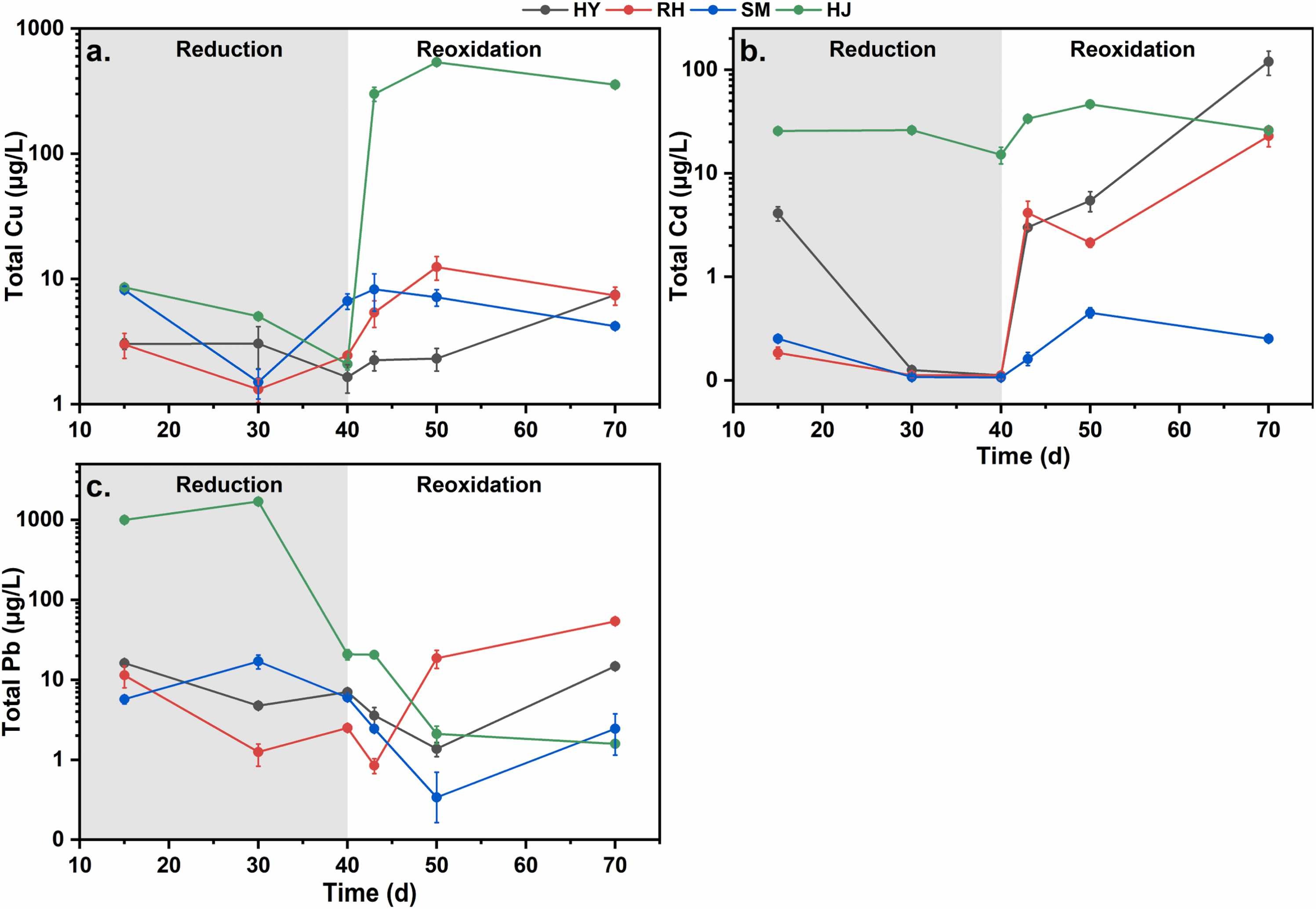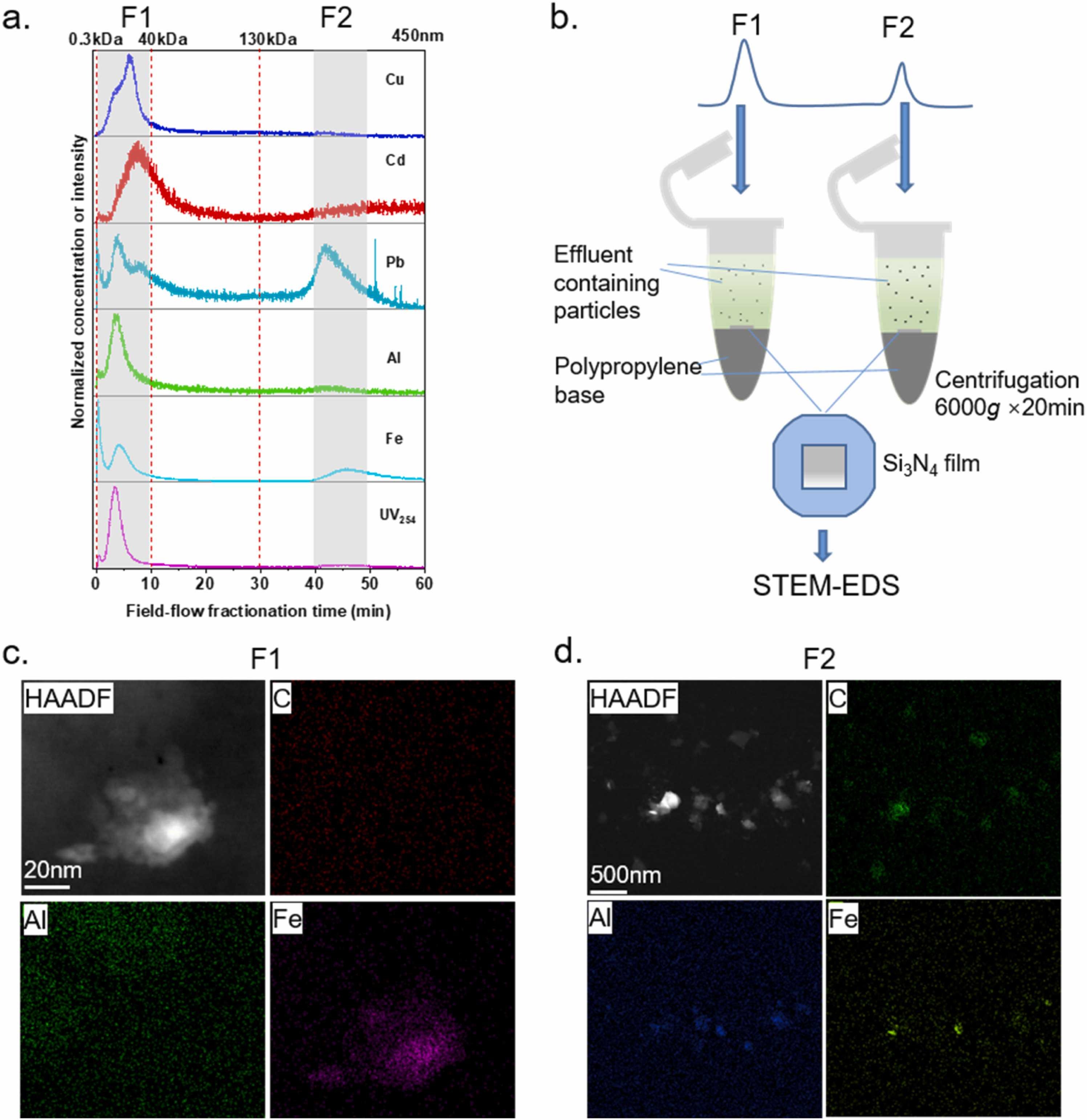Multi-metal contaminant mobilizations by natural colloids and nanoparticles in paddy soils during reduction and reoxidation
Naturally-occurring colloids and nanoparticles are crucial in transporting heavy metal contaminants in soil-water systems. However, information on particle-bound metals’ size distribution and elemental composition in paddy soils under redox-fluctuation is scarce. Here, Prof. Longhua WU from the ISSCAS and his team investigated the mobilization of Cu, Cd, and Pb-containing nanoparticles and colloids in four contaminated soils with distinctive geochemical properties during reduction and subsequent re-oxidation. Using AF4-UV-ICP-MS and STEM-EDS, they observed that particle-bound metals were primarily associated with two sizes ranges: 0.3-40 kDa (F1) and 130 kDa-450 nm (F2), which mainly consisted of organic matter (OM), iron hydroxide and clay minerals. Cu and Pb were more likely bound to colloid than Cd. Colloidal Cu, Pb and Cd accounted for averages of 83.2%, 72.4% and 19.8% of their total concentration in solution (<0.45 μm) during soil reduction, and decreased during soil re-oxidation. This proportion was also positively correlated with aqueous pH and DOC but negatively correlated with Eh. Further quantitative analysis demonstrated that Cu/Cd positively correlated with OM at nanometric scale (F1). This study provides quantitative insights into the size, composition and abundance of polymetallic pollutant-carrying particles in paddy soils during redox fluctuation, and highlights the importance of nanometric interactions between OM and toxic cationic metals for their release.Fig1. Solution dynamics of total Cu (a), Cd (b) and Pb (c) during soil reduction and subsequent re-oxidation for four contaminated paddy soils (HY, RH, SM, and HJ). Bars represent the standard deviation of experimental triplicates.
Fig2. Representative the size separation and component identification of colloid with AF4-UV-ICP-MS and STEM-EDS. (a) is representative AF4 fractograms of colloidal elements in solution of contaminated paddy soil HY after in vitro reduction (day 30). Two size fractions F1 (0.3–40kDa) and F2 (the peak of 130kDa–450nm) can be recognized obviously. (b) is a simple flow chart of the effluent collection and deposition of colloids on Si3N4 film for STEM observation. (c) and (d) are the morphology and component images of particles in F1 and F2 obtained by high-angle annular dark-field scanning transmission electron microscopy coupled with energy-dispersive X-ray spectrometry (HAADF-STEM-EDS).
Contact:
Longhua Wu
Institute of Soil Science, Chinese Academy of Sciences
Email: lhwu@issas.ac.cn
Web: http://english.issas.cas.cn/


